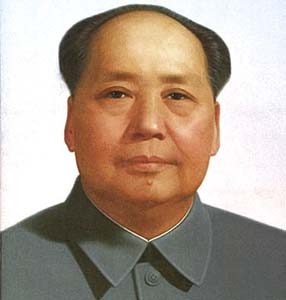'Mao's' Indian media become
 Juyongguan Pass (near Beijing), Jan.14: Cultural Revolution supremo Mao Zedong was quoted as saying during his lifetime that the "Man Who Does Not Touch The Great Wall Is Not A Hero". Well the Indian media today competently proved him wrong by not only touching the Great Wall of China, but climbing sufficiently high to one of the guard stations of yore, where they were declared heroes.
Juyongguan Pass (near Beijing), Jan.14: Cultural Revolution supremo Mao Zedong was quoted as saying during his lifetime that the "Man Who Does Not Touch The Great Wall Is Not A Hero". Well the Indian media today competently proved him wrong by not only touching the Great Wall of China, but climbing sufficiently high to one of the guard stations of yore, where they were declared heroes.
Having some free time on their hands, 35 Indian media personnel boarded a hotel bus to make the more than hour-long journey to the strategically located Juyongguan Pass on the outskirts of Chinese capital Beijing (known as Peping and Peking in ancient times).
Juyongguan was a border town in ancient times, and owning to its location in the heart of the Jundu Mountains at the end of the Tailang range, Chinese emperors of the Han and Ming Dynasties thought it best to set up a fortified garrison to prevent the marauding Mongols and Huns from entering Peping to wreck havoc.
Sunday's expedition to The Great Wall was exciting, adventurous, and if you will, challenging. Yours truly eagerly took to the deeply etched stony stairs in virtual freezing further. Was I out to prove a point? I did not think so at first, but as I progressed upwards, an exhilarating form of determination seem to take hold of me, and I pushed myself, painful knees and thigh muscles et all.
I was the third person out of the 35 to make it to one of the garrison towers where I was greeted by a sign that said: "I was a hero". The others followed suit.
The descent was equally harrowing, even though the view from the top was majestic and awe-inspiring. One had to take the support of the steel and aluminium bars on the sides to come down step by step. Along the way, one saw the Chenghuan Temple, the Xingshu Car park, an assortment of gate towers, watch towers, barbican entrances, Confucian schools and other supplementary buildings.
The Juyongguan Pass was planned by Generals Xu Da and Chang Yuchun in the 14 and 15th centuries, and started collapsing during the Qing period. This wall passes through seven Chinese provinces.
The pass is located in an 18 kilometer-long valley named "Guangou" and is one of the three greatest passes of the Great Wall of China. The other two passes are Jiayuguan Pass and Shanhai Pass.
The Great Wall of China is a series of stone and earthen fortifications built, rebuilt, and maintained between the 5th century BC and the 16th century to protect the northern borders of the Chinese Empire during the rule of successive dynasties.
Several walls, referred to as the Great Wall of China, were built since the 5th century BC. The most famous is the wall built between 220 BC and 200 BC by the first Emperor of China, Qin Shi Huang; little of it remains; it was much farther north than the current wall, which was built during the Ming Dynasty.
The Great Wall of China is the world's longest human-made structure, stretching over approximately 6,400 km (4,000 miles) from Shanhaiguan in the east to Lop Nur in the west, along an arc that roughly delineates the southern edge of Inner Mongolia, but stretches to over 6,700 km (4,160 miles) in total.
It is also the largest human-made structure ever built in terms of surface area and mass. At its peak, the Ming Wall was guarded by over a million men. It has been estimated that somewhere between two to three million Chinese died while it was being built. (ANI)